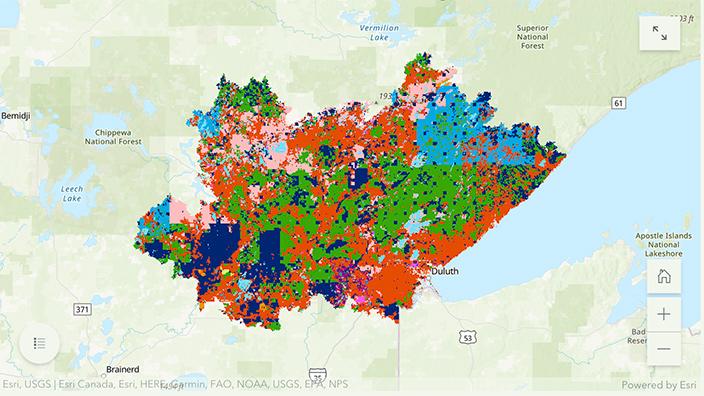
Program Overview
The focus of our research is on forest processes; understanding how trees and forests respond to natural disturbance and how managers can best mimic those disturbances to sustainably manage forest ecosystems.
- Develop quantitative and qualitative data on Minnesota’s forests to enable us to measure, model and predict
-
their ability to support and grow trees,
-
the growth and yield of commercial forest species,
-
the impacts of forest management activities on site productivity, and
-
the ability of forests to support a broad array of forest ecosystem services.
-
- Develop best management practices, management guidelines, silvicultural prescriptions and predictive models to help policy makers, planners and resources managers increase the quality and quantity of forests, commercial forest species and forest ecosystem service on public and private lands.
Program Goals
- To understand the quantity, quality, and availability of forests, forest products and forest ecosystems services in Minnesota
- To create predictive tools to help natural resource managers understand the the opportunities and implement management activities to support sustainable forest utilization, conservation and restoration
Capabilities and Expertise
- Modeling qualitative and quantitative forest resource data
- Developing predictive models to answer specific questions about management opportunities
- Developing visualizations of modeled output
Recent Projects
- Understanding Minnesota’s Forests - Using remotely sensed data to improve Minnesota’s forest resources inventory
- Growth and yield models for Minnesota’s commercial forest species
